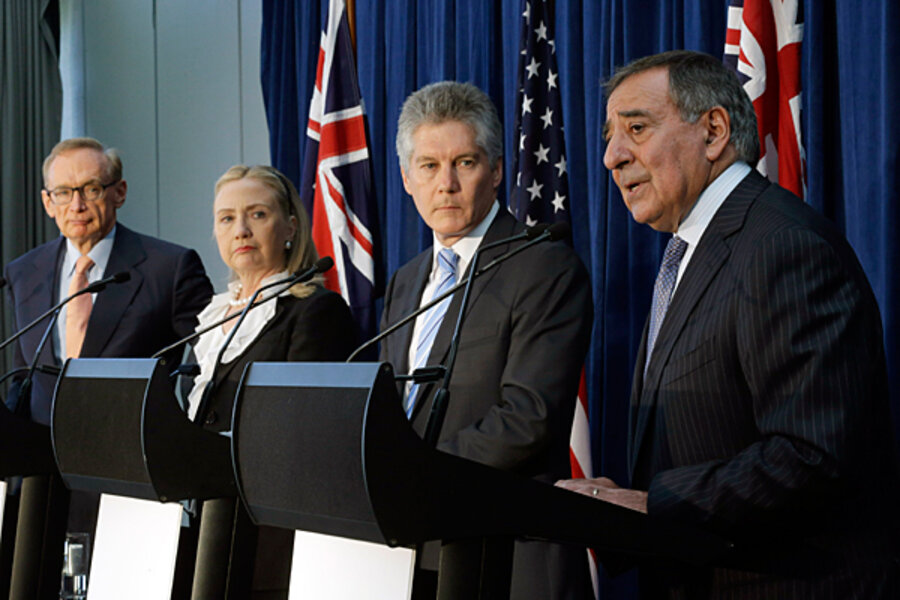Space cooperation with Australia the latest sign of US pivot toward Asia
Loading...
| Perth, Australia
The US military said on Wednesday it will station in Australia an advanced radar to help track space junk threatening satellites and is working toward placement of a new, state-of-the-art deep-space telescope developed by the Pentagon's advanced research arm.
The positioning of the advanced military equipment is another sign of deepening US military ties with Australia and America's widely touted "pivot" to Asia. It follows an agreement last year for a rotating training presence of up to 2,500 Marines in Australia's northern tropical city of Darwin.
Defense Secretary Leon Panetta and Australia's Defense Minister Stephen Smith made the announcement after high-level talks in the city of Perth, adding the C-Band radar would be moved from its present location on the island of Antigua some time in 2014.
"There is now so much debris in space that being acutely aware of space debris is very important to all nation states," Smith said, warning that space junk could threaten satellites.
The Pentagon said in a fact-sheet the C-Band radar can track up to 200 objects a day and can help identify satellites, their orbits and "potential anomalies."
Once relocated to Australia's Harold E. Holt Naval Communications Station, it will be the first low-earth orbit space surveillance network sensor in the southern hemisphere.
The United States and Australia are also working to move to Australia an advanced optical telescope, known as the Space Surveillance Telescope, developed by the Pentagon's Defense Advanced Research Projects Agency, or DARPA.
Panetta said the United States and Australia were also in discussions about the establishment of a "Combined Communications Gateway" in Australia that would give both countries greater access to the Wideband Global Satellite communications satellites currently in orbit.
"All of that represents a major leap forward in bilateral space cooperation," Panetta said.
Australia's defence policy is based around predictions of a more challenging and uncertain security outlook in Asia over the next two decades. It has responded with plans to purchase 100 F-35 stealth fighter aircraft and double its submarine fleet with a new generation of more potent, long-range boats.
Australia has played down the risk such facilities could antagonise an increasingly muscular China, which in 2011 had two-way trade with Canberra worth A$113 billion, making it Australia's biggest trade partner.
Additional reporting by Phil Stewart and Rob Taylor







